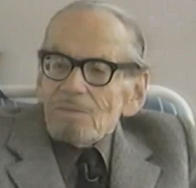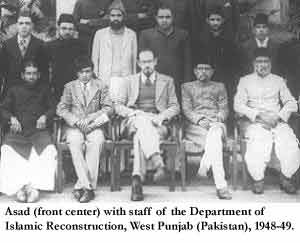Quaid e Azam created a department of Islamic Reconstruction in 1947 to create an Islamic state in Pakistan. He appointed the German convert Muslims Muhemmed Asad as its director general. After the death of Quaid e Azam, the whole department was burnt down by the traitors and its research lost to the nation. Now for the first time in 65 years, these rare, historical and visionary works are brought back to life, Alhamdolillah. These are the lost papers of Muhemmed Asad.
These papers have an incredible historical value and set the record straight on the vision, mission, ambitions and aspirations of our founding fathers – Quaid, Allama Iqbal, Liaqat Ali Khan and Allama Asad – on the newly created Islamic state of Pakistan. These papers destroy the myth comprehensively that our founding fathers wanted to create secular state and did not wish an Islamic state. These papers are most decisive rebuttal to the liberal fascists who have been resisting the Islamic state in Pakistan and now would form the basis upon which to rebuild a glorious Islamic civilization, InshAllah!
<a title="View The lost papers of Allama Mohammad Asad on Scribd" href="http://www.scribd.com/doc/103174754" style="margin: 12px auto 6px auto; font-family: Helvetica,Arial,Sans-serif; font-style: normal; font-variant: normal; font-weight: normal; font-size: 14px; line-height: normal; font-size-adjust: none; font-stretch: normal; -x-system-font: none; display: block; text-decoration: underline;">The lost papers of Allama Mohammad Asad</a><iframe class="scribd_iframe_embed" src="http://www.scribd.com/embeds/103174754/content?start_page=1&view_mode=scroll" data-auto-height="true" data-aspect-ratio="" scrolling="no" id="doc_46635" width="100%" height="600" frameborder="0"></iframe>
http://www.scribd.com/doc/103174754/The-lost-papers-of-Allama-Mohammad-Asad
These papers have an incredible historical value and set the record straight on the vision, mission, ambitions and aspirations of our founding fathers – Quaid, Allama Iqbal, Liaqat Ali Khan and Allama Asad – on the newly created Islamic state of Pakistan. These papers destroy the myth comprehensively that our founding fathers wanted to create secular state and did not wish an Islamic state. These papers are most decisive rebuttal to the liberal fascists who have been resisting the Islamic state in Pakistan and now would form the basis upon which to rebuild a glorious Islamic civilization, InshAllah!
<a title="View The lost papers of Allama Mohammad Asad on Scribd" href="http://www.scribd.com/doc/103174754" style="margin: 12px auto 6px auto; font-family: Helvetica,Arial,Sans-serif; font-style: normal; font-variant: normal; font-weight: normal; font-size: 14px; line-height: normal; font-size-adjust: none; font-stretch: normal; -x-system-font: none; display: block; text-decoration: underline;">The lost papers of Allama Mohammad Asad</a><iframe class="scribd_iframe_embed" src="http://www.scribd.com/embeds/103174754/content?start_page=1&view_mode=scroll" data-auto-height="true" data-aspect-ratio="" scrolling="no" id="doc_46635" width="100%" height="600" frameborder="0"></iframe>
http://www.scribd.com/doc/103174754/The-lost-papers-of-Allama-Mohammad-Asad








